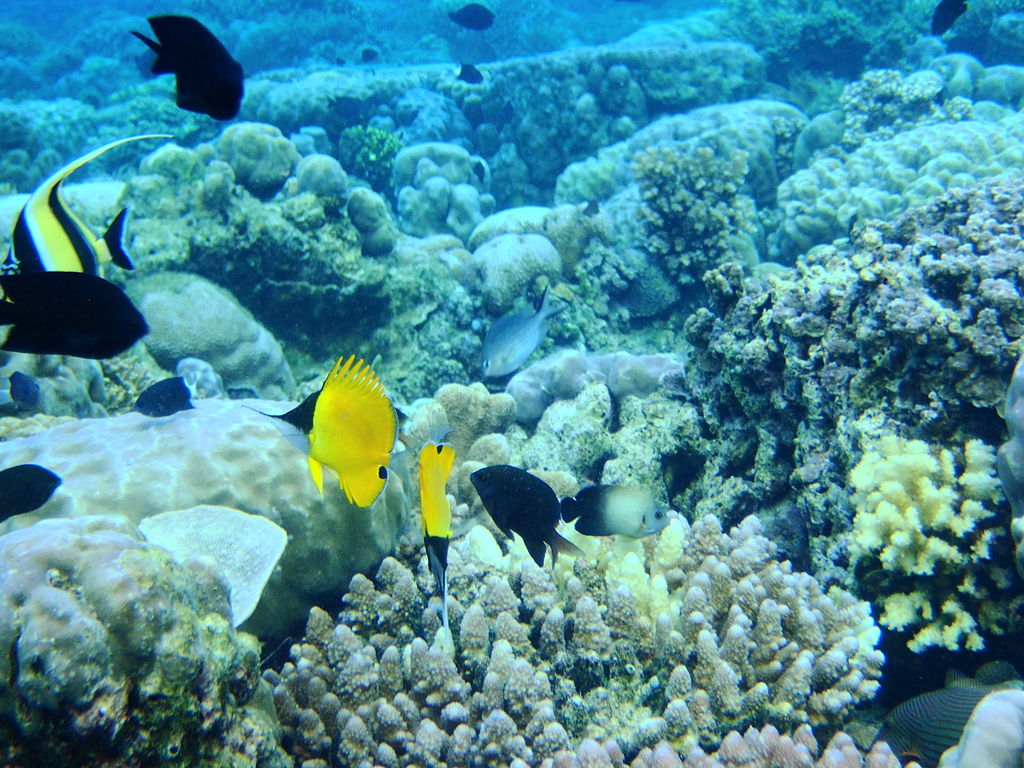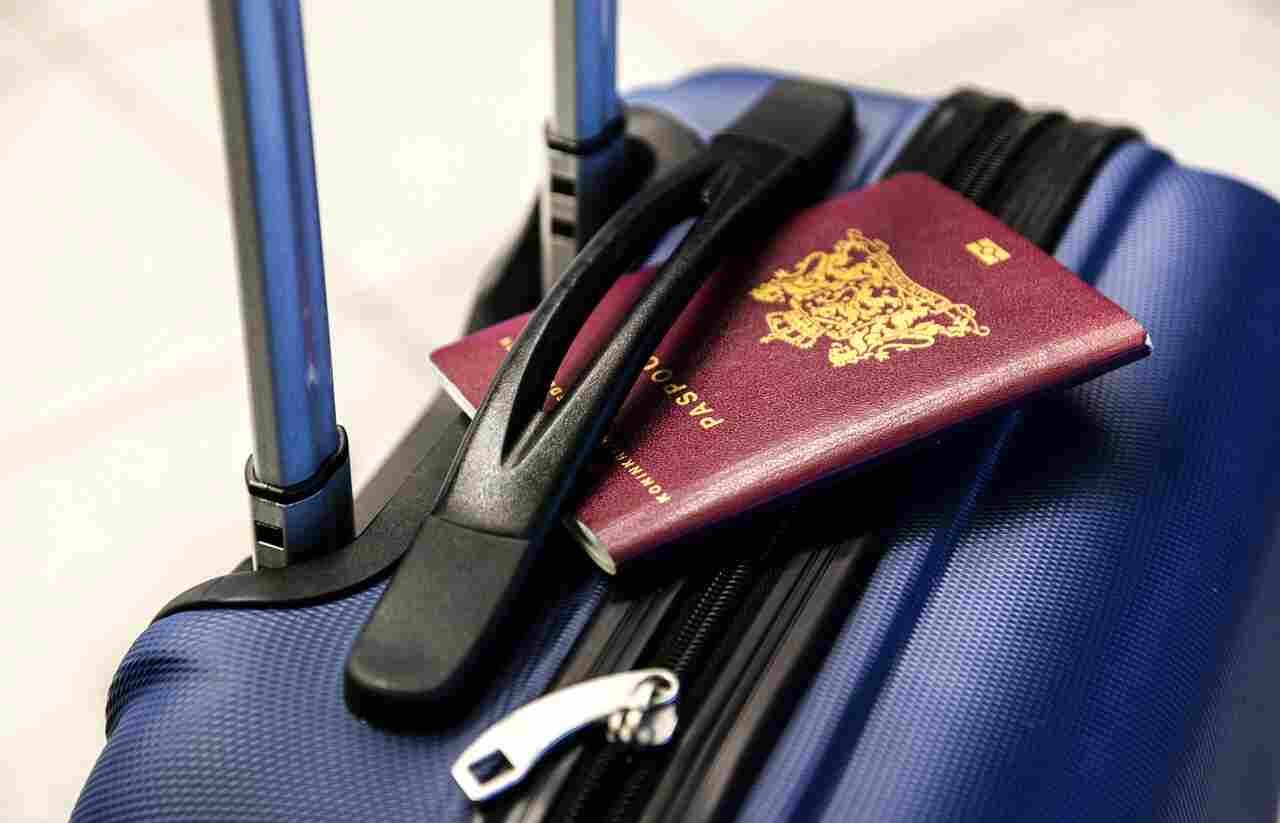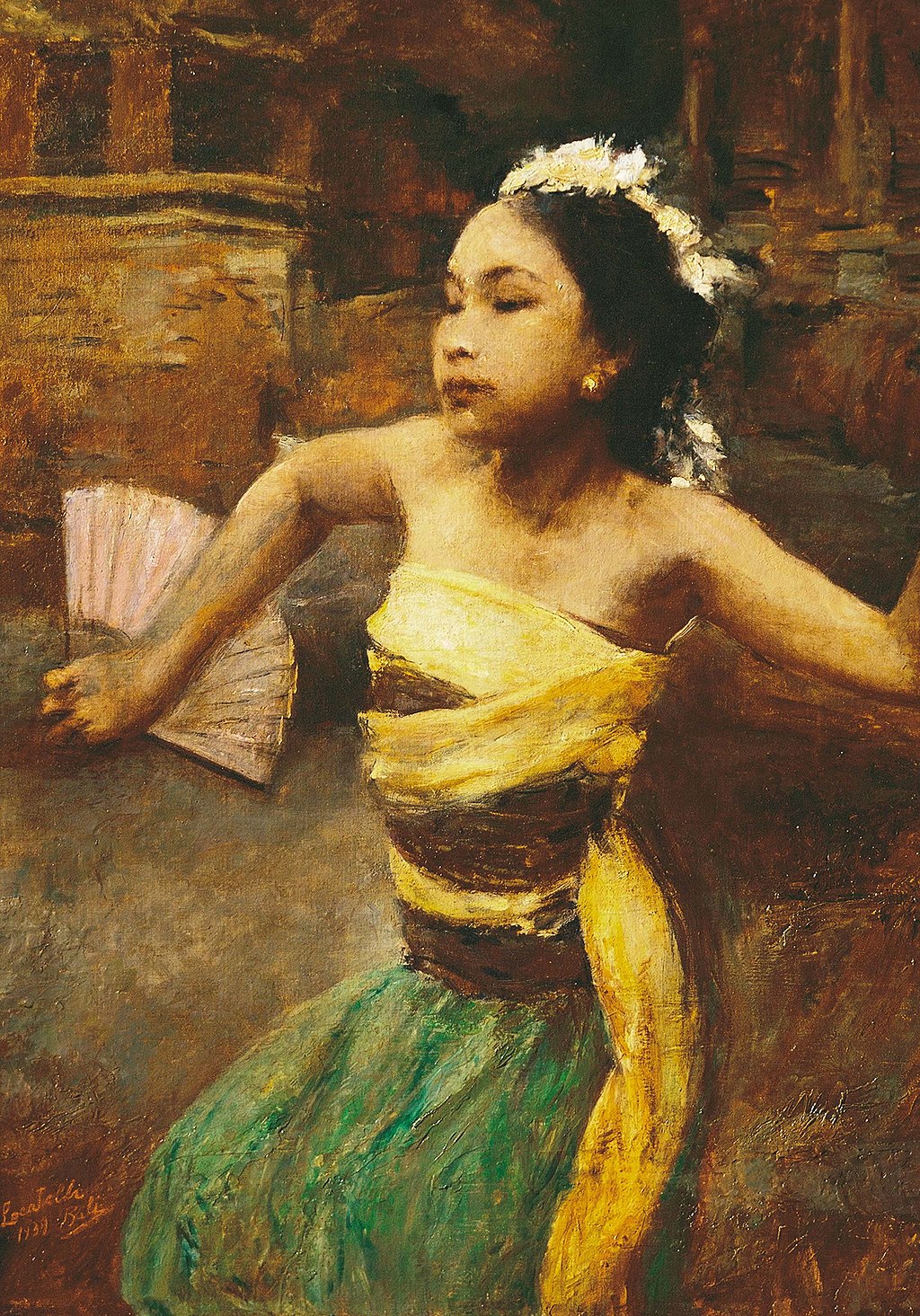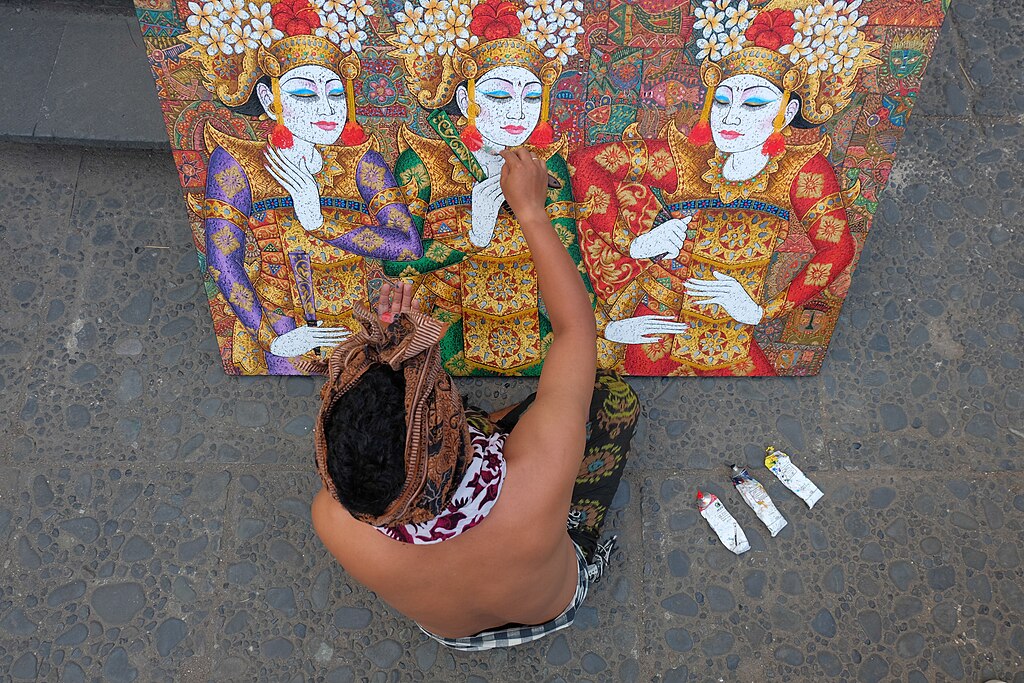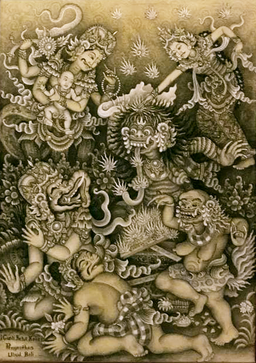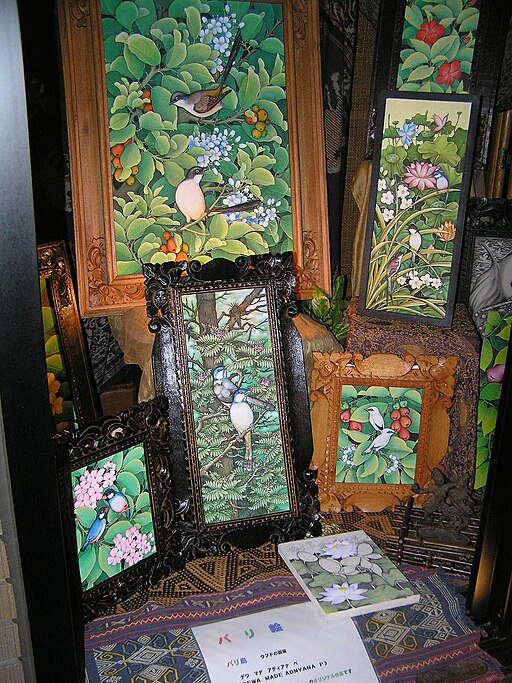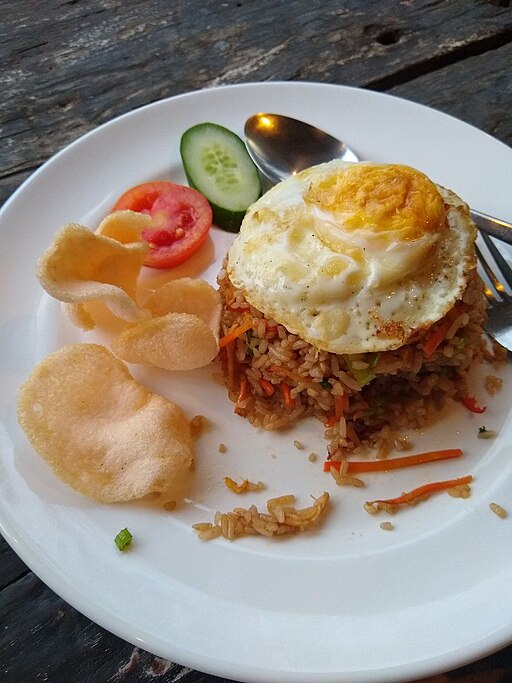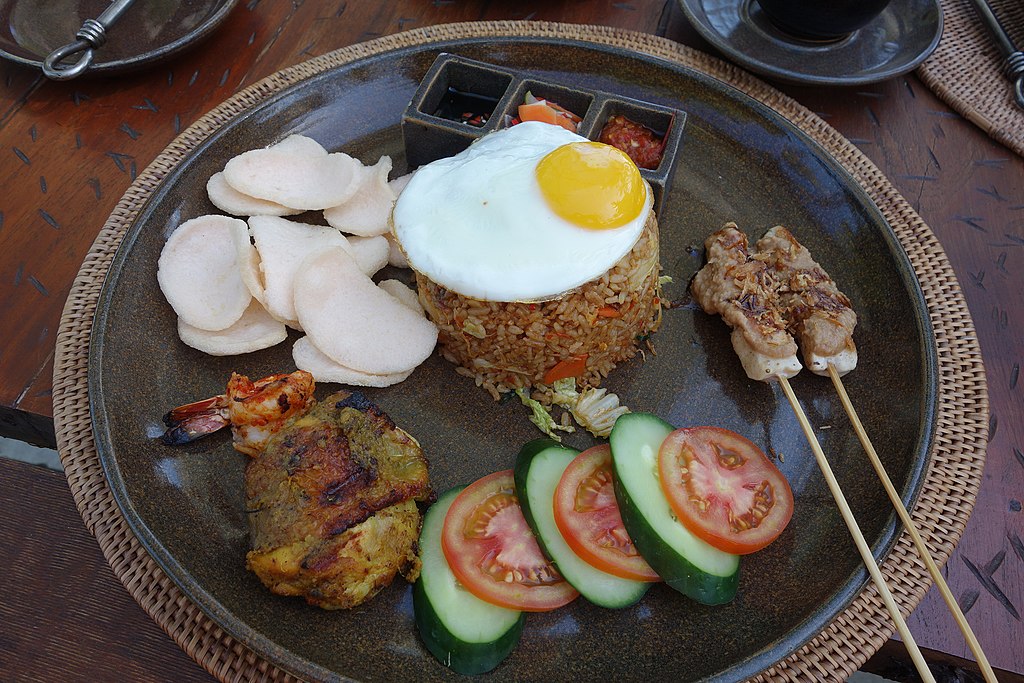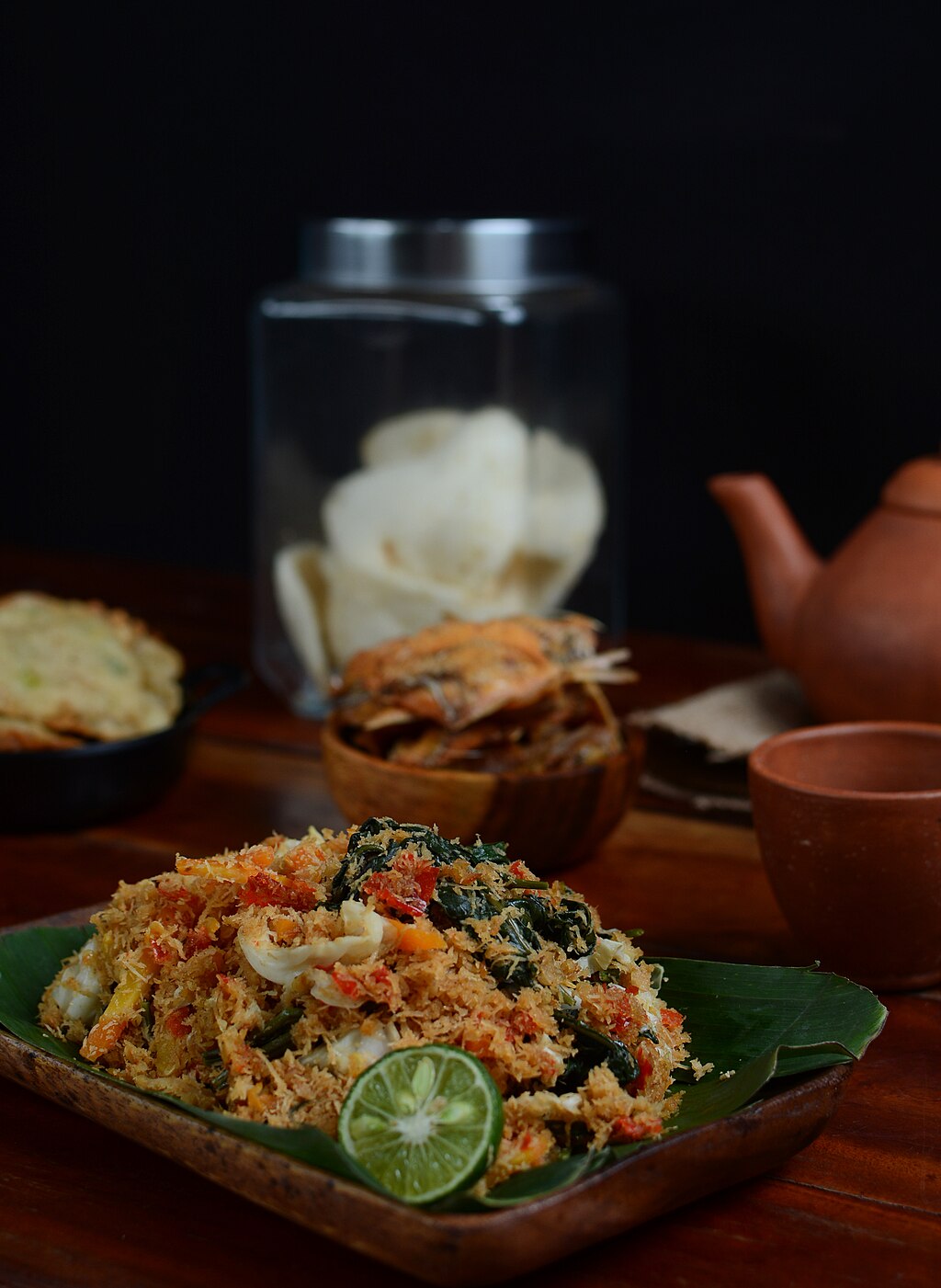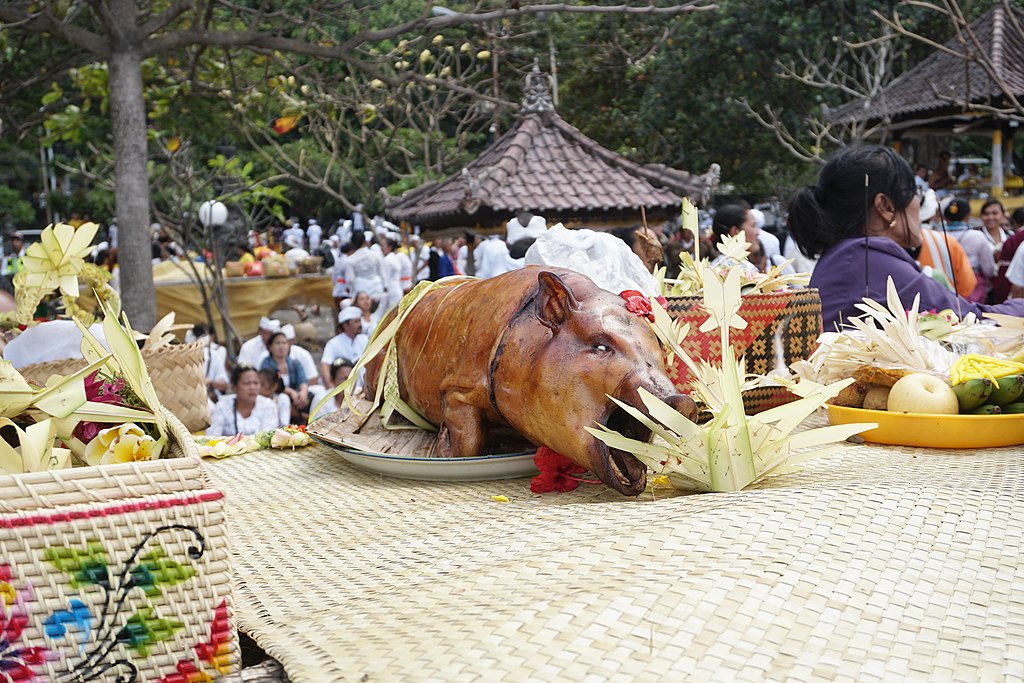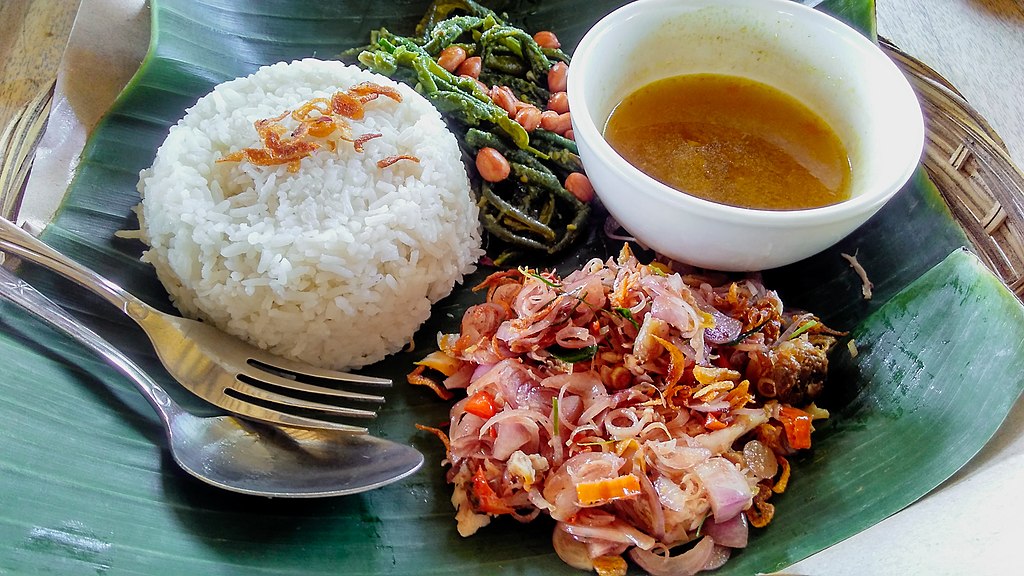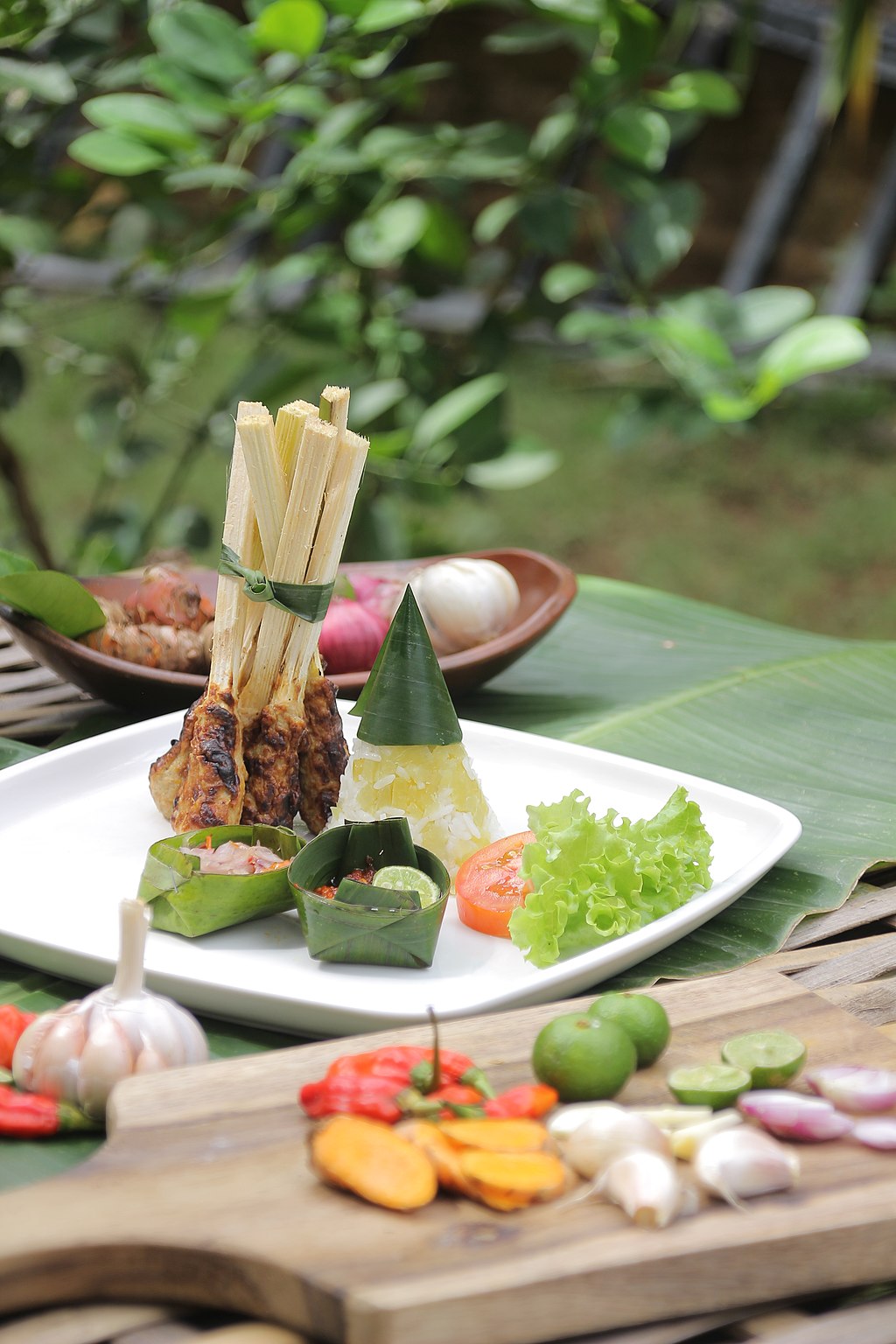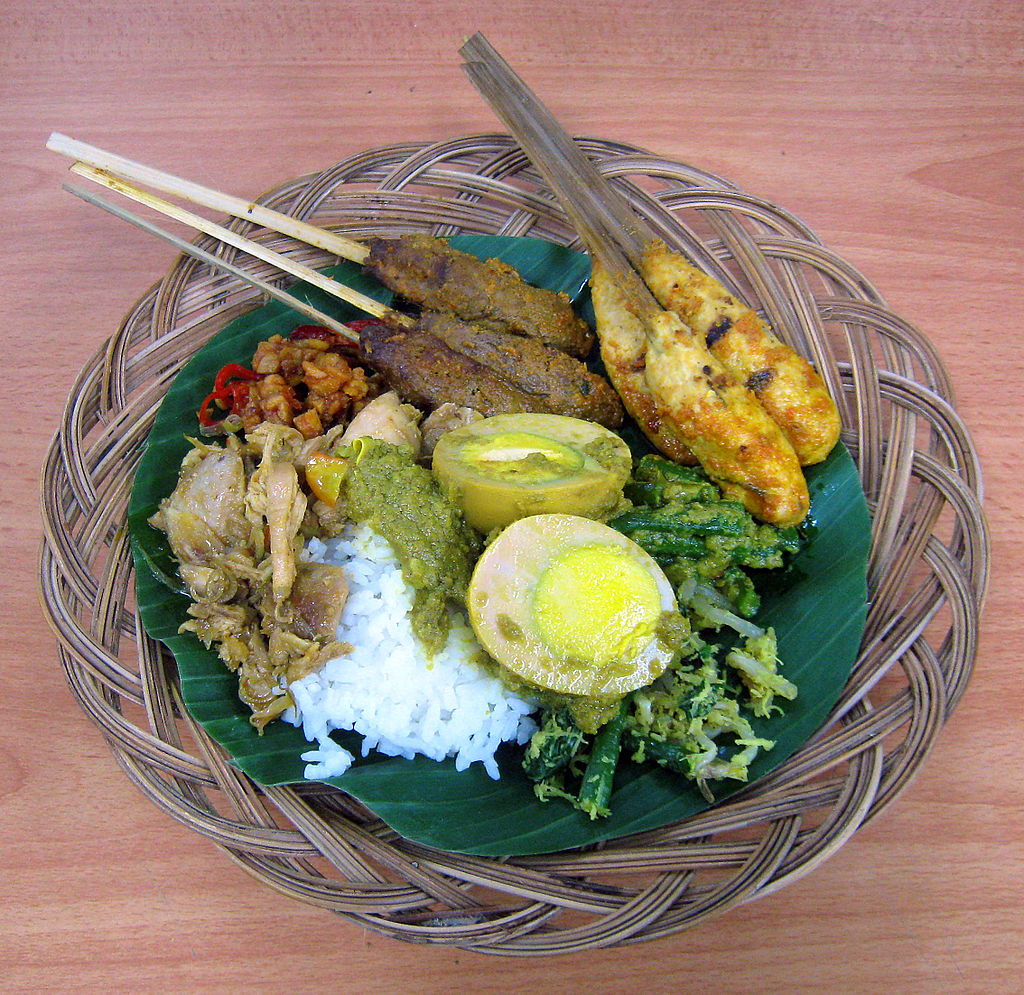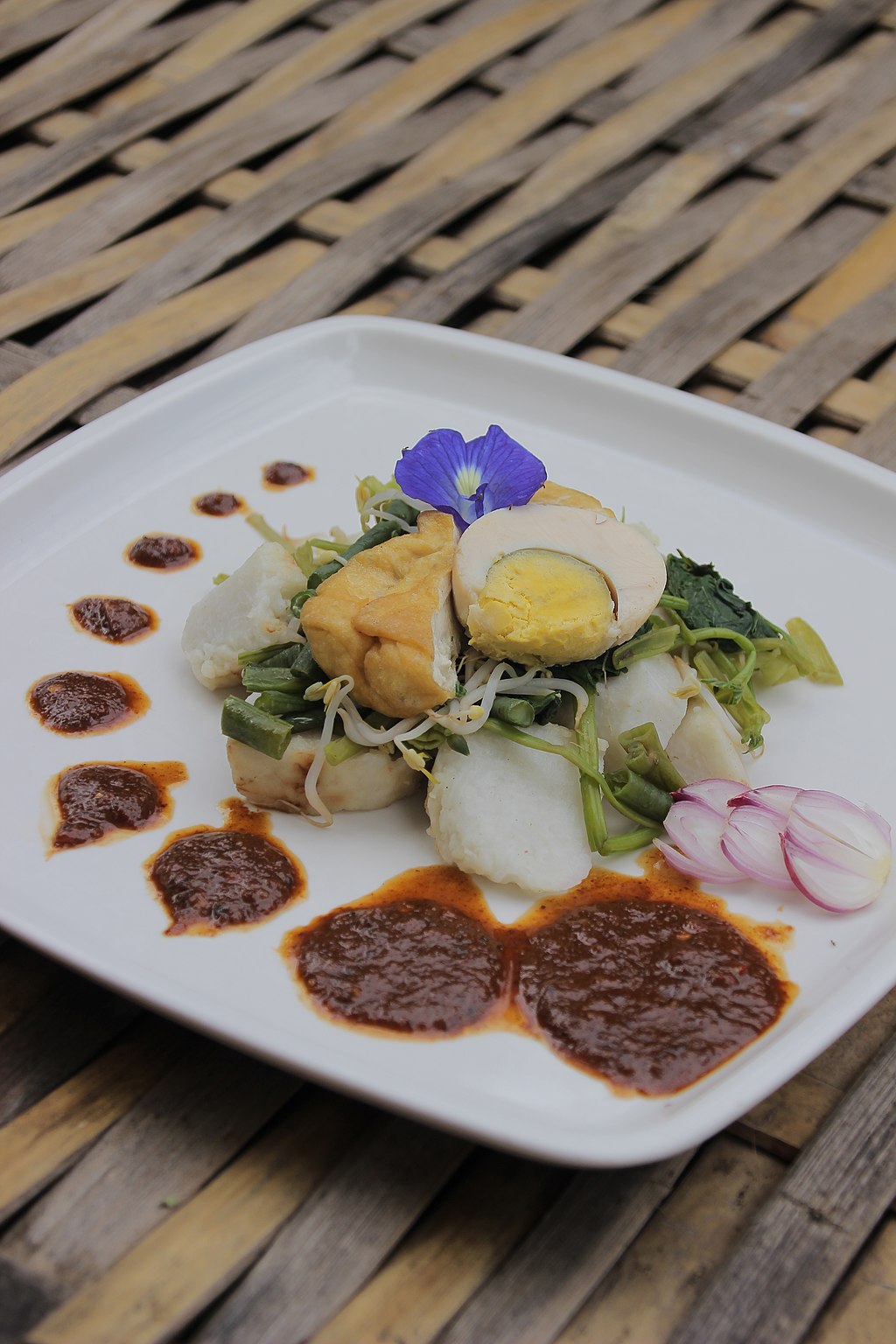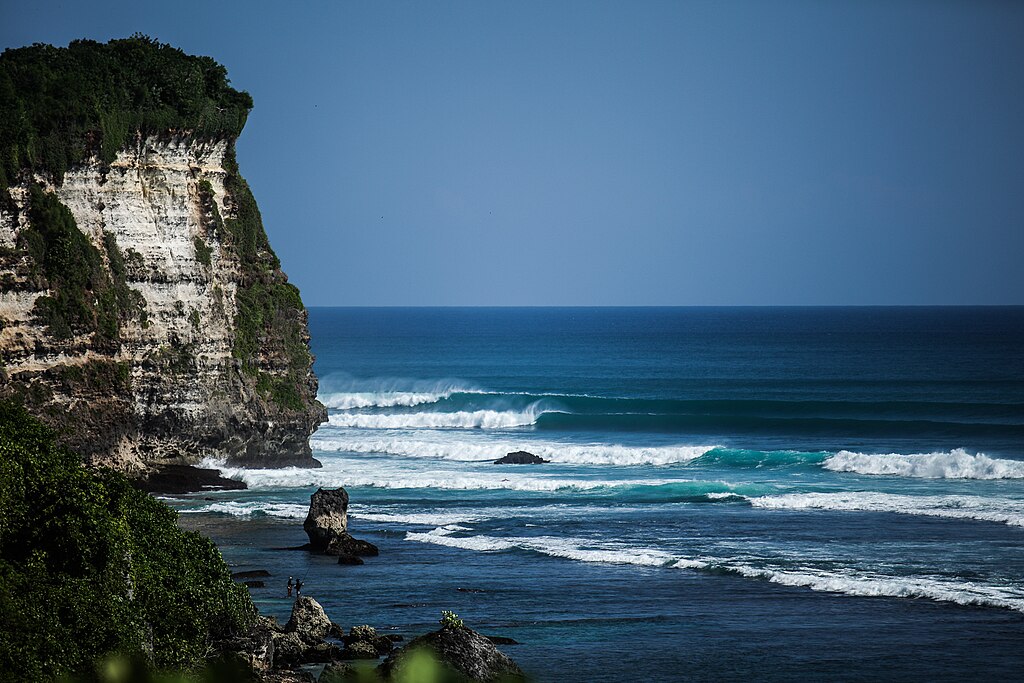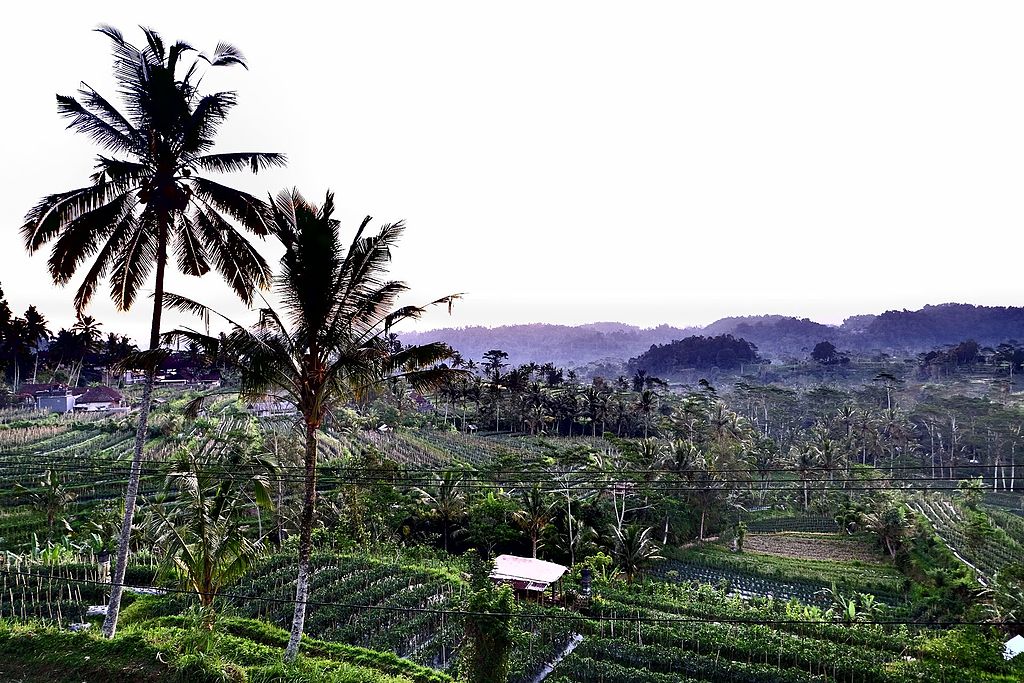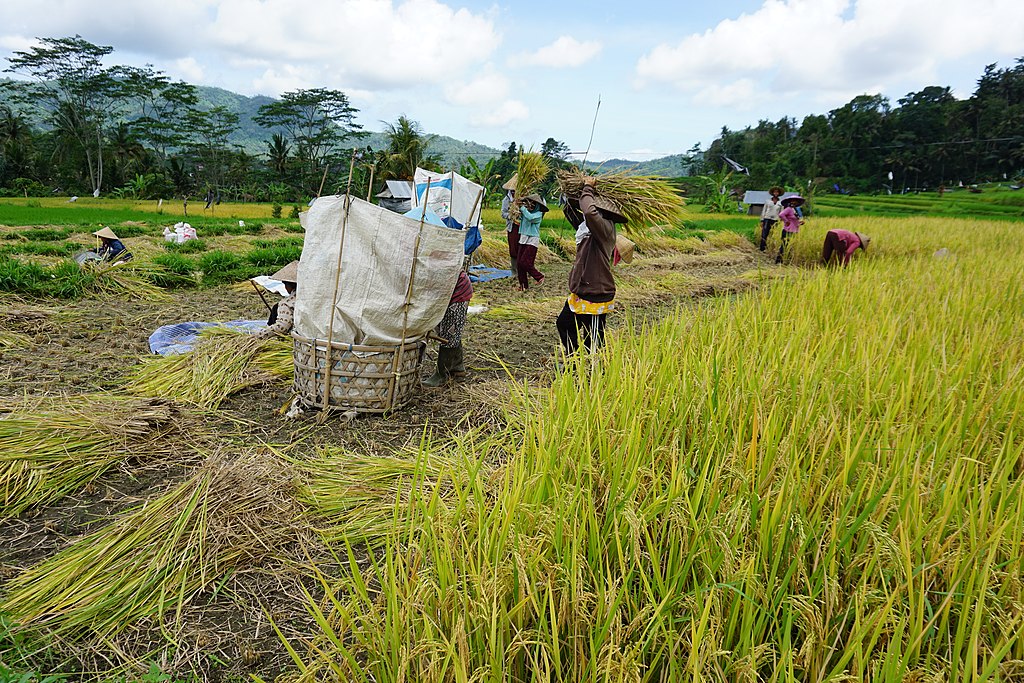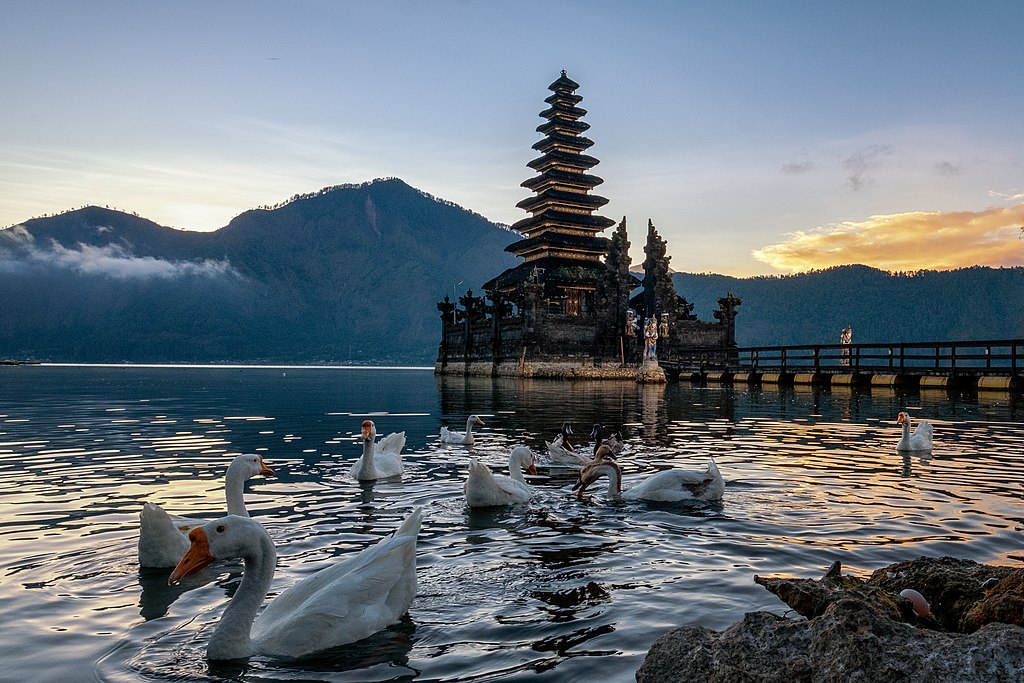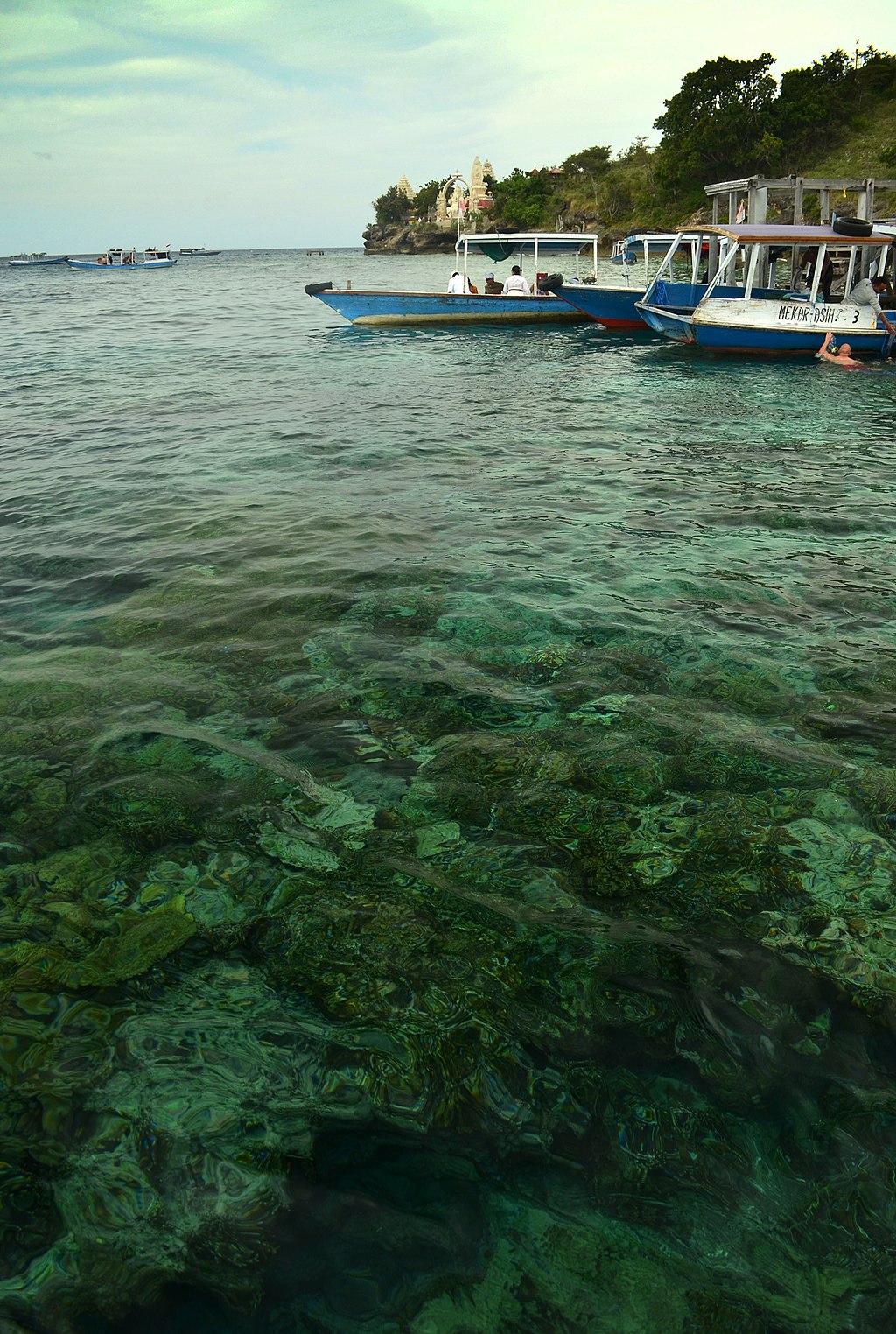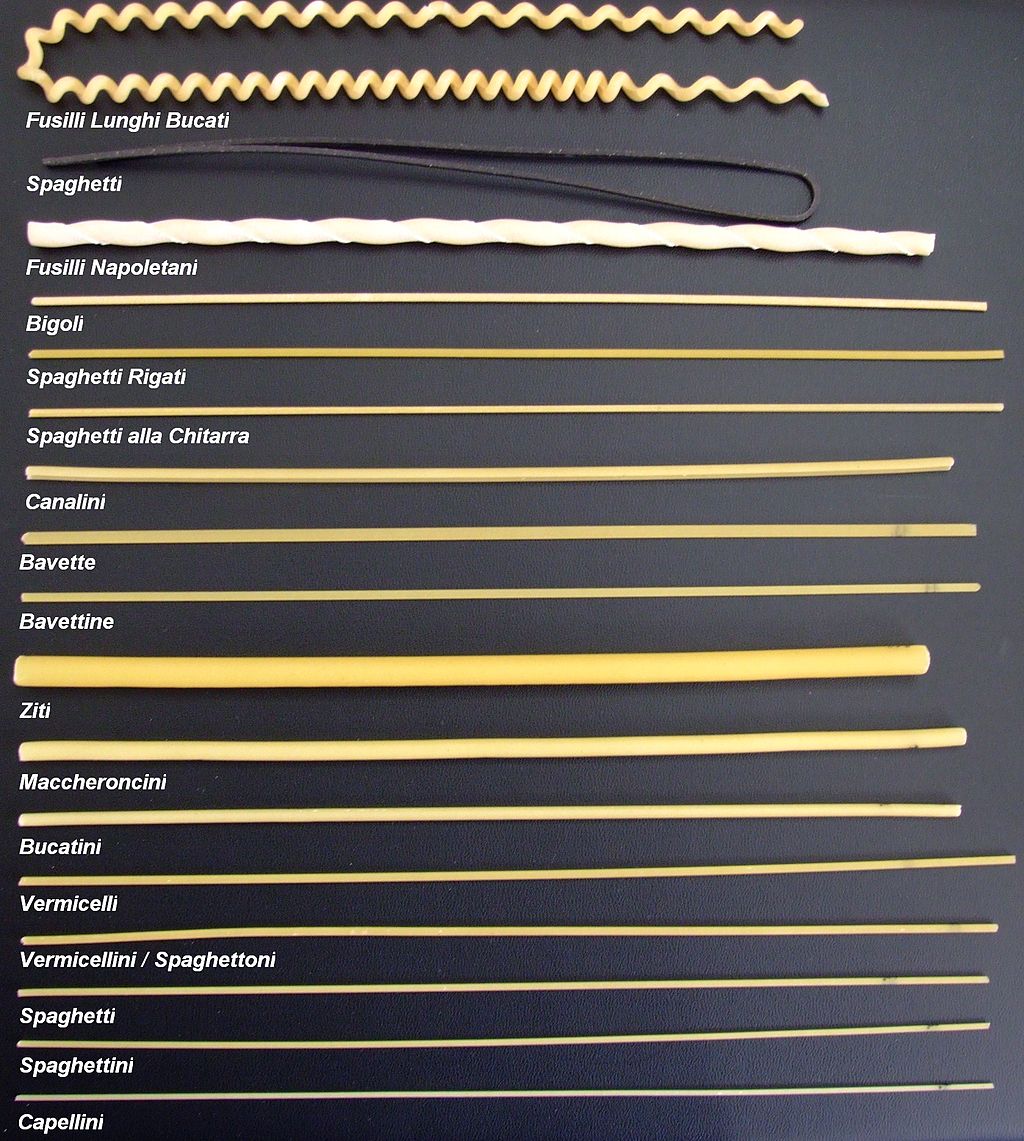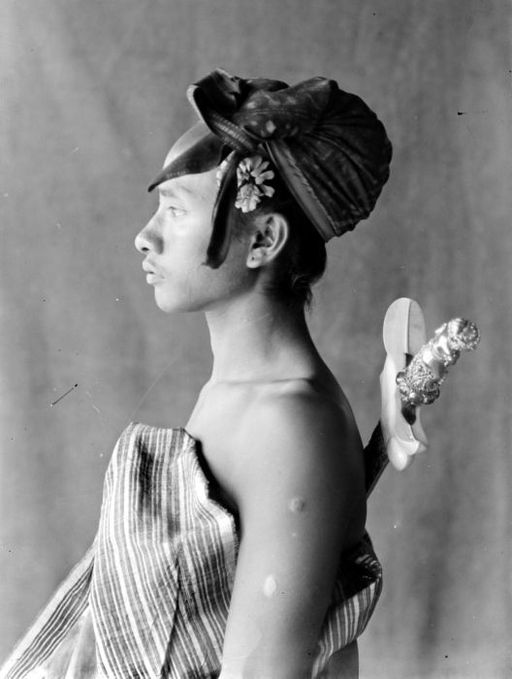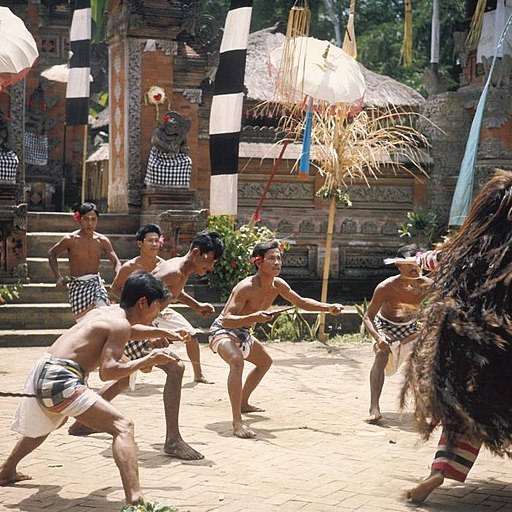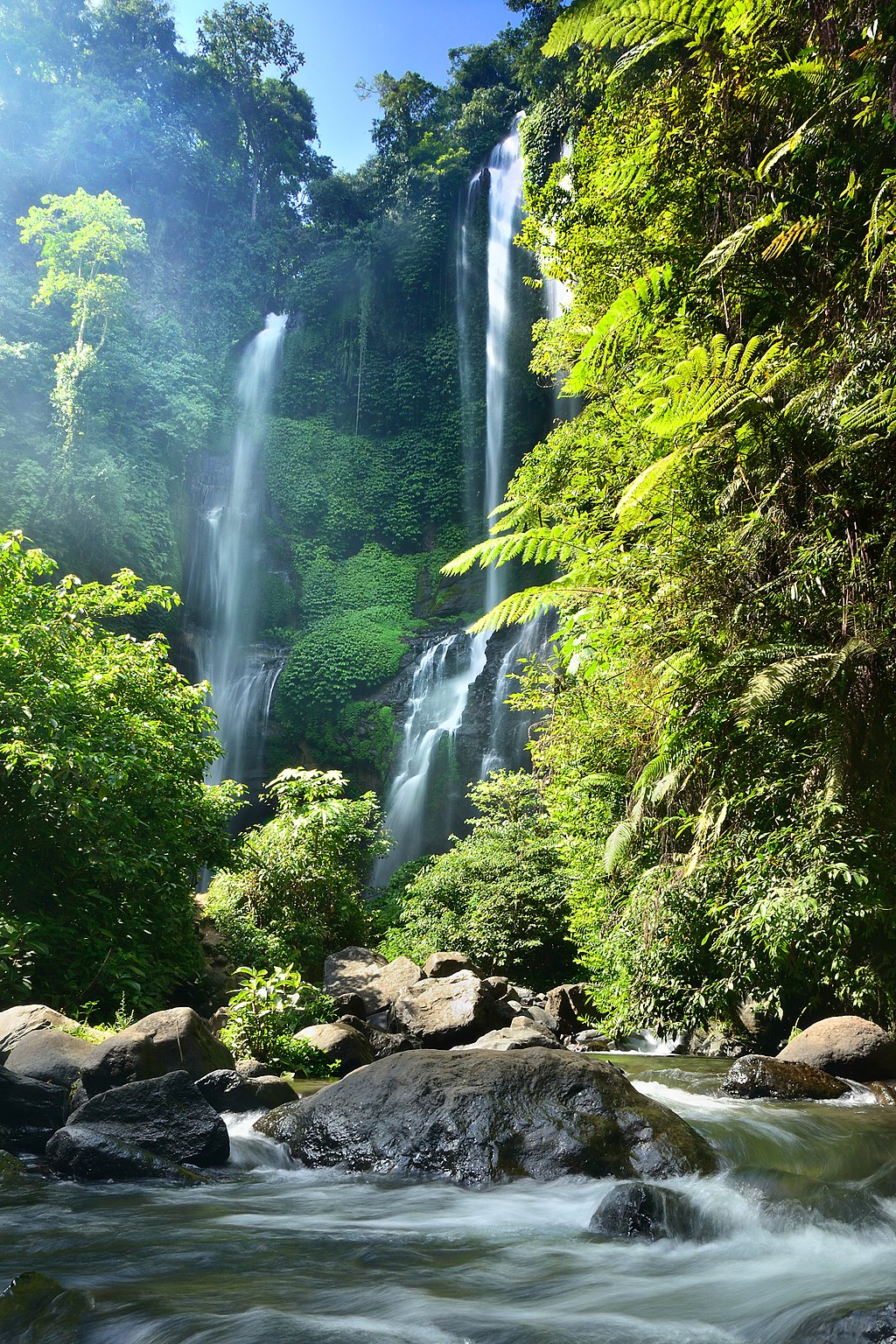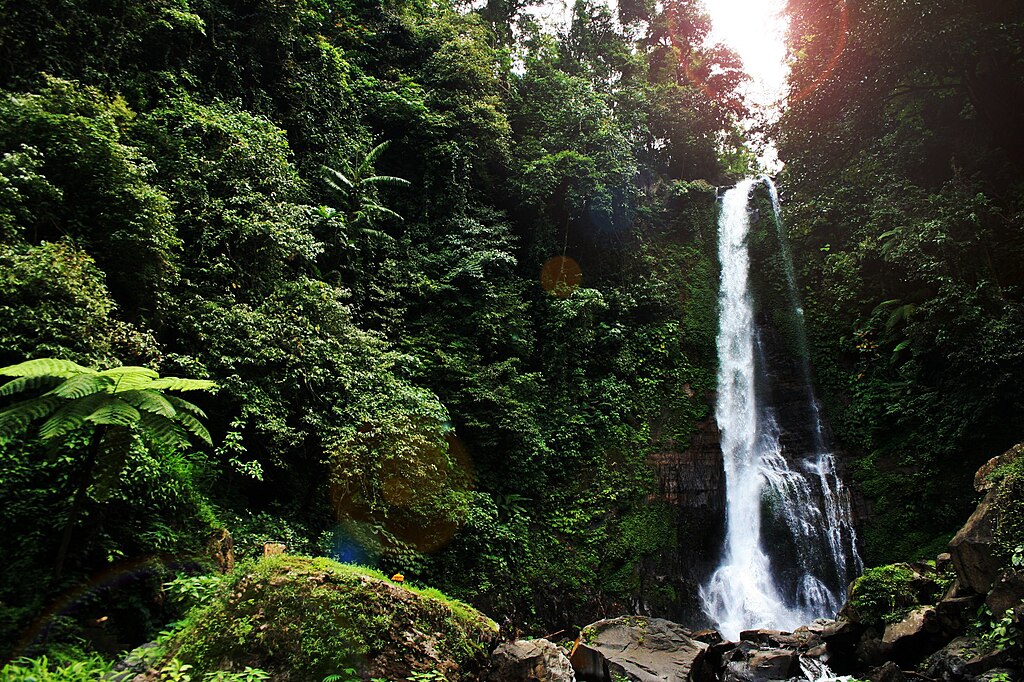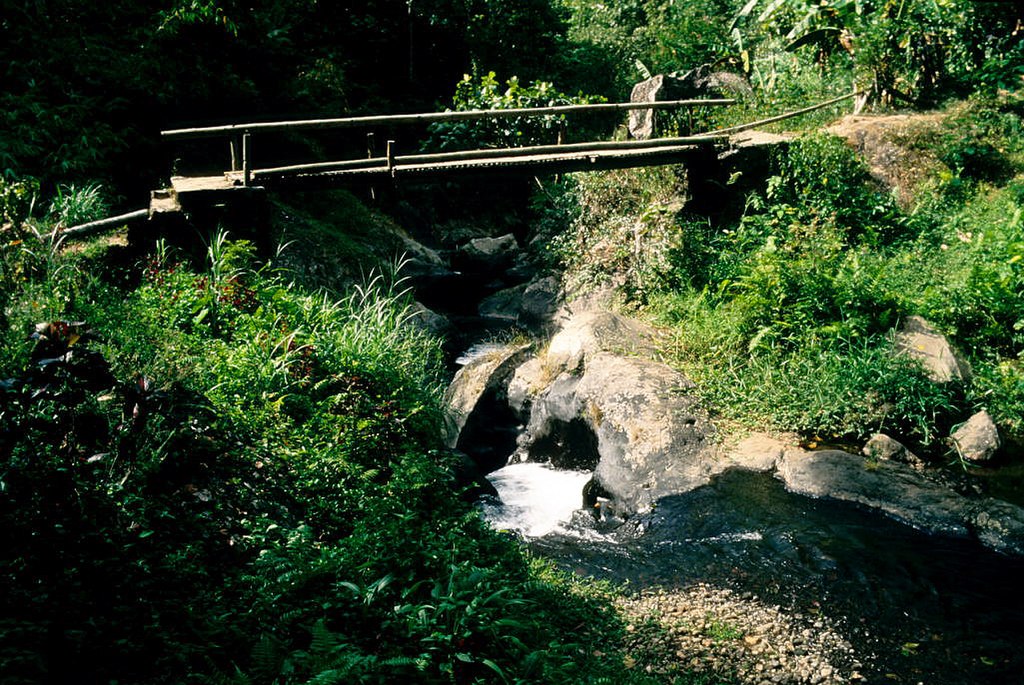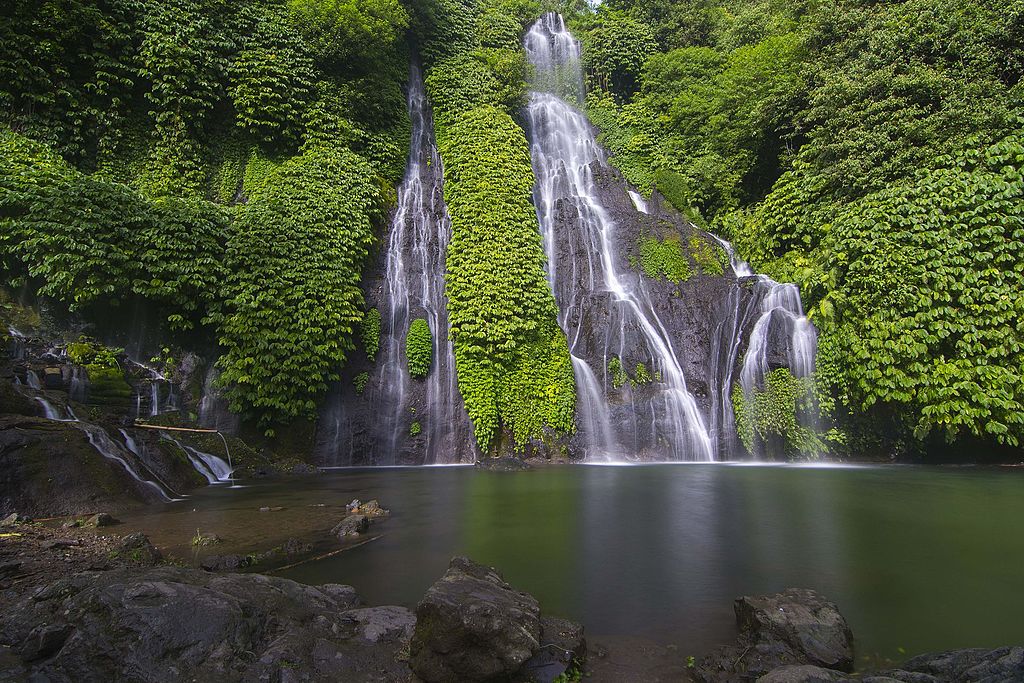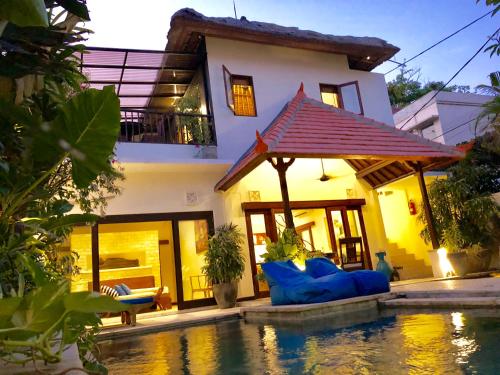Must See Places in Indonesia | Places to See and Go for an Unforgettable Adventure
We present the places in the order of the ratio: number of mentions of the place in the top three / number of respondents who visited the place. If you’re planning a trip to Indonesia, make sure to add these must see places in Indonesia to your itinerary.
You will find the places listed in most guidebooks, but also destinations off the beaten track and outside Bali. Our goal is not to elevate preserved places to the rank of “tourist destination” (provided they remain so), nor to create a “to-do-list” of the country, but simply to share experiences between travelers and tips from the community. Keep in mind that this list is not exhaustive and that by exploring for yourself, you will undoubtedly discover other beauty of this country.
Embark on an unforgettable journey and explore Indonesia’s must-see places, from the iconic temples of Borobudur to the stunning beaches of Bali and beyond!
Indonesia is a country with a rich cultural heritage, stunning landscapes, and diverse attractions. From the beaches of Bali to the temples of Borobudur, there is something for every traveler in this beautiful archipelago. So if you’re looking for an adventure, pack your bags and explore the wonders of Indonesia
MUST SEE PLACES IN INDONESIA AND BEST PLACES (Indonesia Travel Guide)
If you’re planning a trip to Indonesia, make sure to add these must see places in Indonesia to your itinerary,
Indonesia is a country that is rich in history, culture, and natural beauty. With over 17,000 islands, there are endless opportunities to explore and discover in this beautiful country. From ancient temples to beautiful beaches, here are some of the must visit places to see and go in Indonesia:
Bali
Bali is undoubtedly one of the most popular destinations in Indonesia, and for good reason. This island is a popular destination in Indonesia, known for its beautiful beaches, stunning rice paddies, and ancient temples. Some of the must-visit places in Bali include Seminyak, Tanah Lot Temple, Ubud Monkey Forest, and the Tegallalang Rice Terraces.
Indonesia’s must-see places list wouldn’t be complete without Bali, where visitors can experience a blend of ancient and modern cultures, explore breathtaking landscapes, indulge in delicious food, and immerse themselves in the island’s vibrant arts scene.
Things To Do in Bali and What to Visit, Where To Go While Vacationing in Bali? (Top Attractions)
How to get there: Bali is easily accessible by air, with Ngurah Rai International Airport serving as the main gateway to the island. This island is accessible by flights from major cities in Indonesia, as well as international airports in Southeast Asia, Australia, and some Middle Eastern countries.
Borobudur Temple (Central Java)
Located in Central Java, the Borobudur Temple is a UNESCO World Heritage Site and one of the most famous temples in Indonesia. The temple dates back to the 9th century and is a beautiful example of Buddhist architecture. Visitors can explore the temple’s intricate carvings and sculptures, as well as admire the surrounding views.
The must-see places of Borobudur temple in Central Java is a testament to Indonesia’s rich cultural heritage, with its intricate carvings and majestic structure that have withstood the test of time, making it a must-see destination for any history and culture enthusiast.
From Bali to Yogyakarta | Complete Guide to Visit Central Java
How to get there: Borobudur is located in Central Java and is easily accessible by car or bus from Yogyakarta. It takes around a 1-hour drive from Yogyakarta International Airport to reach the Borobudur Temple.
Mount Bromo (East Java)
Mount Bromo is an active volcano located in East Java. Visitors can hike to the top of the volcano to see the beautiful sunrise over the Tengger Caldera. The surrounding landscape offers breathtaking views of the mountains and the sea of sand.
The must-see places of Mount Bromo in East Java offer an otherworldly experience, from the breathtaking sunrise views over the smoking crater to the picturesque landscapes of the surrounding mountains – a visit to Mount Bromo is a must for any adventurer seeking an unforgettable experience in Indonesia.

Viewing point for Bromo sunrise. Azxeav, CC BY-SA 4.0, via Wikimedia Commons
How to get there: Mount Bromo is located in East Java and is easily accessible by car or bus from Surabaya. The nearest city to Mount Bromo is Probolinggo, which can be reached by train or bus from Surabaya or Yogyakarta.
Komodo National Park
The Komodo National Park is located in the Lesser Sunda Islands and is home to the world’s largest lizards, the Komodo dragons. Visitors can go on a trek to see the dragons in their natural habitat and explore the beautiful marine life in the park. The park also offers stunning views of the islands and the sea.

One of beach in Padar Island, located in Komodo National Park. Find your joys and calm feel, just by looking the nature here. Triayusept, CC BY-SA 4.0, via Wikimedia Commons
How to get there: The Komodo National Park is located in the Lesser Sunda Islands and is accessible by boat from Bali or Flores.
Raja Ampat Islands – World’s Most Beautiful Coral Reefs
The Raja Ampat Islands are located off the coast of West Papua and are known for their pristine beaches and beautiful coral reefs. The islands are a popular destination for snorkeling and diving. The islands are a popular destination for snorkeling and diving, with a diverse range of marine life and underwater landscapes to explore.

Raja Ampat. I Made Adi Dharmawam, CC BY-SA 4.0, via Wikimedia Commons
How to get there: The Raja Ampat Islands are accessible by air from Jakarta or Bali, with flights landing in Sorong, followed by a boat trip to the islands.
Sumatra
Traveling to Sumatra, Indonesia, is embarking on a journey through a land of diverse landscapes and vibrant cultures. This large island offers an array of experiences, from encountering exotic wildlife in lush rainforests to relaxing by the tranquil shores of Lake Toba, one of the world’s largest volcanic lakes. Immerse yourself in the rich traditions of local communities and explore bustling markets.
For a truly unforgettable adventure, head to Bukit Lawang, where you can witness orangutans in their natural habitat. Sumatra is a destination that promises a tapestry of unique and memorable moments.
Sumatra Travel Guide: Discover the Top Must-Visit Places and Unforgettable Experiences
Lake Toba (Sumatra)
Lake Toba is a large volcanic lake located in North Sumatra. It is the largest volcanic lake in the world and is surrounded by beautiful mountains and traditional Batak villages. Visitors can enjoy water activities, such as swimming and fishing, or explore the traditional villages and cultural attractions.
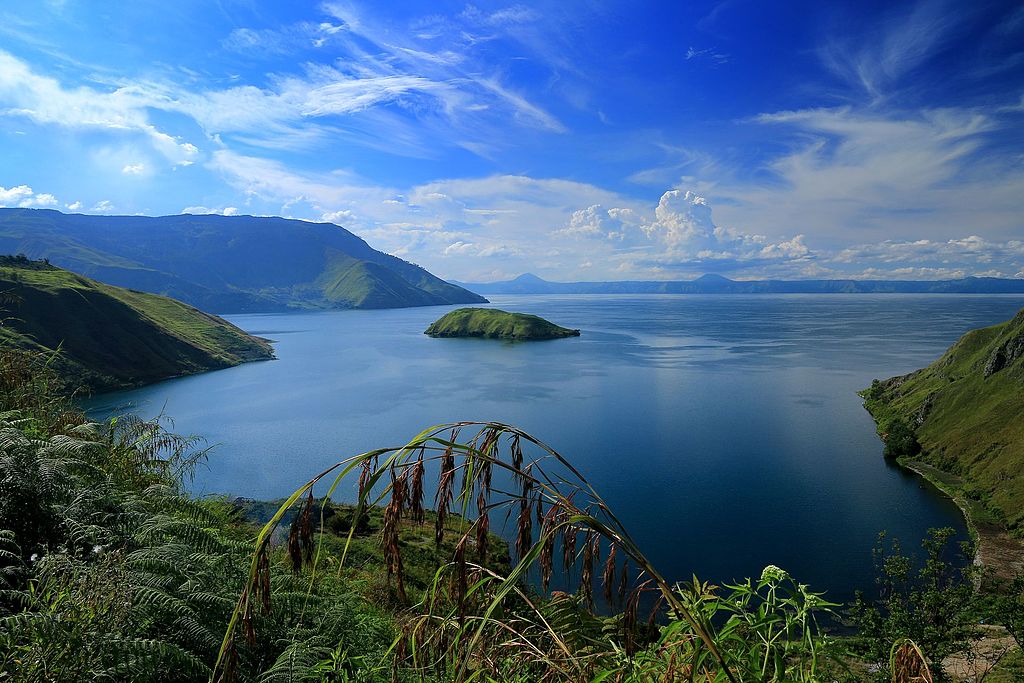
A view Danau Toba from Samosir Island. PL 05 SIGIT, CC BY-SA 4.0, via Wikimedia Commons
How to get there: Lake Toba is accessible by car or bus from Medan, the capital of North Sumatra.
Belitung Island – Hidden Gem in Sumatra
Belitung Island is a small island located off the coast of Sumatra, known for its white-sand beaches, crystal-clear waters, and unique rock formations. Visitors can explore the island’s natural beauty, as well as learn about its tin mining history and cultural heritage.
Must-visit places in Belitung Island include:
- Tanjung Tinggi Beach: A beautiful beach with white sand and unique rock formations.
- Museum Kata Andrea Hirata: A museum dedicated to the author of the popular Indonesian novel “Laskar Pelangi.”
- Lengkuas Island: A small island with a lighthouse and beautiful coral reefs.
How to get there: Belitung Island is accessible by flights from Jakarta, as well as by a ferry from the city of Tanjung Pandan.
Krakatoa
Krakatoa, nestled between West Java and Sumatra, is a region of awe-inspiring natural wonders, particularly its volcanic attractions. This area holds a unique fascination for those seeking to witness the raw power of nature. From the historic eruption to the regrowth of life, Krakatoa offers a glimpse into the dynamic forces that shape our planet.
Come, embark on a journey to discover the captivating story of this remarkable volcanic landscape.
From Bali to Krakatoa | Discovering the Volcanic Wonders Between West Java and Sumatra
Yogyakarta (Central Java)
Yogyakarta, often called Jogja, is a city located in the heart of Java. This city is known for its rich history and culture. Some of the must-visit places in Yogyakarta include the Kraton Yogyakarta Palace, the Prambanan Temple, and the Taman Sari Water Castle.
From Bali to Yogyakarta | Complete Guide to Visit Central Java
How to get there: Yogyakarta is accessible by air or train from Jakarta, Bali, or other major cities in Indonesia.
Java
Java, the heart of Indonesia, is a captivating island that offers a perfect blend of cultural treasures, natural wonders, and warm hospitality. As the most populous island in the world, Java boasts a rich history that dates back centuries and a vibrant present that is sure to leave visitors in awe.
Home to Jakarta, the bustling capital city of Indonesia, Java is a melting pot of diverse cultures, traditions, and cuisines. The island is renowned for its UNESCO World Heritage sites, including the majestic Borobudur Temple, a magnificent Buddhist monument, and the ancient Hindu temples of Prambanan, which stand as testaments to the island’s ancient religious roots.
In addition to its cultural landmarks, Java boasts breathtaking natural landscapes. From the mesmerizing sunrise over Mount Bromo to the serene tranquility of Kawah Ijen’s turquoise crater lake, Java offers unforgettable experiences for nature enthusiasts and adventure seekers alike. The island is also known for its stunning rice terraces, lush national parks, and vibrant underwater ecosystems, making it a paradise for hiking, wildlife spotting, and diving enthusiasts.
The hospitality of the Javanese people is legendary, as they warmly welcome visitors and offer a glimpse into their way of life. Exploring the vibrant markets, sampling local delicacies, and engaging in traditional arts and crafts are just a few ways to connect with the island’s rich cultural heritage and create lasting memories.
Java’s transportation infrastructure, including well-connected airports, railways, and roads, makes it easily accessible for travelers seeking to uncover its hidden gems. Whether you’re interested in exploring historical sites, embarking on thrilling adventures, or simply immersing yourself in the island’s enchanting atmosphere, Java offers a myriad of experiences that will leave a lasting impression.
In conclusion, Java is a captivating destination that seamlessly weaves together a rich cultural heritage and awe-inspiring natural wonders. With its historical sites, breathtaking landscapes, and warm hospitality, Java invites travelers to embark on an unforgettable journey filled with discovery, adventure, and a deeper understanding of Indonesia’s diverse tapestry.
So, pack your bags and get ready to explore the enchanting island of Java. Your adventure awaits!
Note: This article provides a brief overview of Java and its attractions. For detailed travel information, please click below link.
Gili Islands (off the coast of Lombok)
The Gili Islands are located off the coast of Lombok and are known for their beautiful beaches and crystal-clear waters. Visitors can go snorkeling or diving to see the beautiful marine life, or simply relax on the beach and enjoy the stunning views.
 Beach on Gili Air, looking at Lombok Island. Laurent Bigué, CC BY-SA 3.0, via Wikimedia Commons
Beach on Gili Air, looking at Lombok Island. Laurent Bigué, CC BY-SA 3.0, via Wikimedia Commons
How to get to Gili islands from Bali? The Gili Islands are accessible by boat from Bali or Lombok.
From Bali to Gili Islands | Complete guide to visit Meno, Air, Trawangan Islands
Lombok – Island of Thousand Mosques
Lombok is an island located next to Bali, known for its stunning landscapes and Islamic culture. Visitors can explore the island’s beautiful beaches, waterfalls, and volcanic mountains, as well as experience the local Sasak culture and Islamic traditions.
Must-visit places in Lombok include:
- Mount Rinjani: An active volcano and the second-highest mountain in Indonesia, offering a challenging trekking experience and stunning views of the island.
- Gili Islands: A group of three small islands known for their pristine beaches and crystal-clear waters.
- Kuta Beach Lombok: A popular beach destination with white sands and turquoise waters.
How to get there: Lombok is accessible by flights from major cities in Indonesia, as well as by a fast boat from Bali.
From Bali to Lombok | Complete guide to visit and explore Lombok Island
Banda Islands
The Banda Islands are located in the Banda Sea and are known for their rich history and beautiful marine life. Visitors can explore the historic Fort Belgica, go on a spice tour, or go diving to see the colorful coral reefs and sea life.
The Banda Islands are a group of ten small islands located in the Maluku province. They are known as the “Spice Islands” due to their historical importance in the spice trade. Visitors can explore the islands’ rich history, pristine beaches, and abundant marine life.

The Banda Islands. Jan 1998. Viewed from the peak of Gunung Api volcano. In the centre is group’s main island, Bandaneira, where the airstrip, port, and Fort Belgica can be seen. In the background is part of Lontar Island, from where the spice nutmeg originated. I, Anton Leddin, CC BY-SA 3.0, via Wikimedia Commons
How to get there: The islands are accessible by flights from Ambon or by boat from Ambon or Tual.
From Bali to Banda Islands | Complete Guide to Visit Ambon and Maluku Islands
Ternate and Tidore – Twin Islands of North Maluku
Ternate and Tidore are two small islands located in North Maluku, known for their beautiful beaches, historical landmarks, and cultural heritage. Visitors can explore the islands’ ancient forts and palaces, as well as enjoy their scenic views and traditional markets.
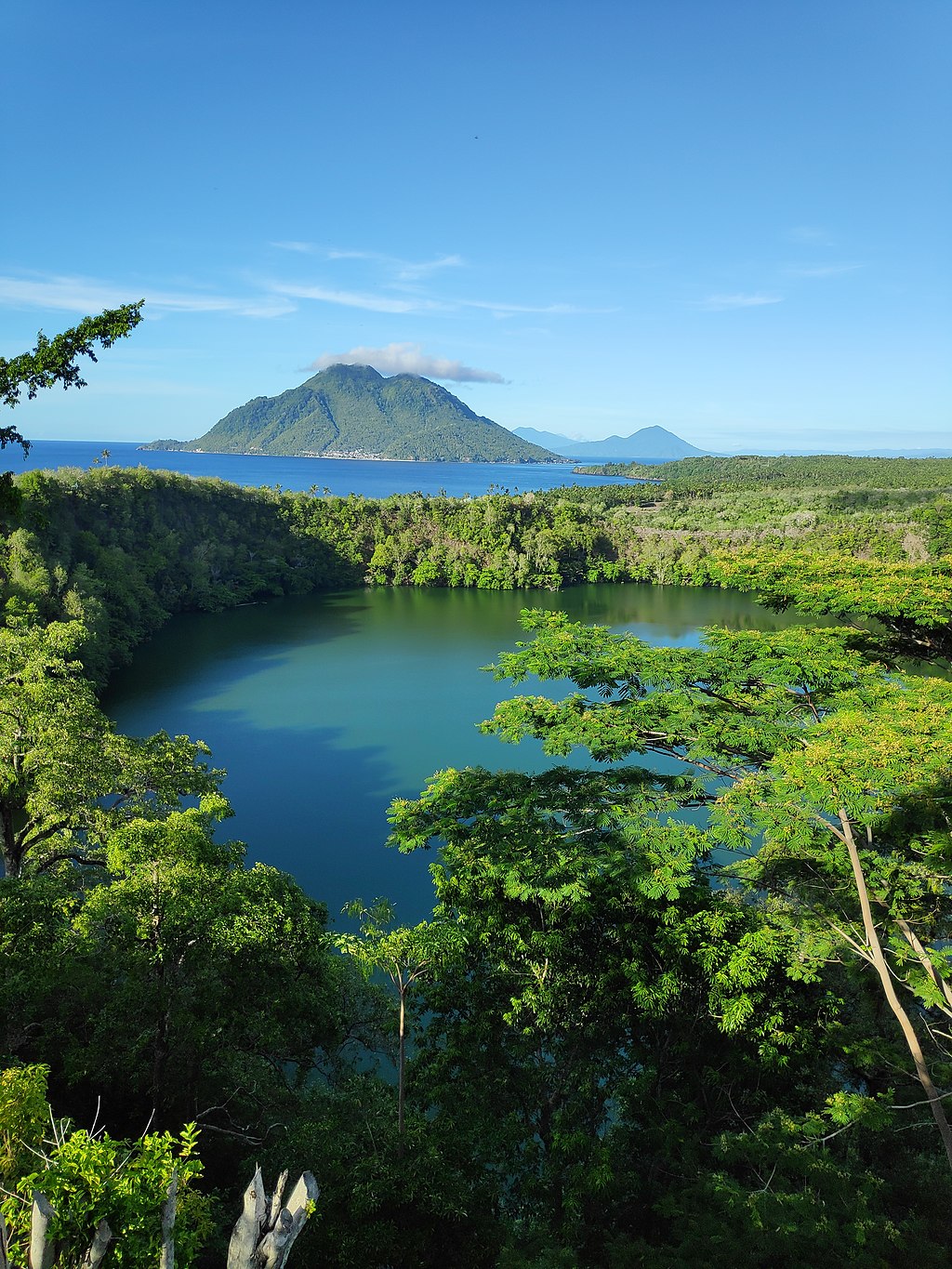
Tolire Lake, Ternate, North Moluccas, Indonesia. Ultreia et suseia, CC BY-SA 4.0, via Wikimedia Commons
The islands were once the center of the Spice Trade and were ruled by various sultanates. Some of the must-see places on these islands include the Sultan’s Palace and Museum, Fort Oranje, and the ancient royal tombs of the Ternate Sultanate. Additionally, visitors can enjoy the natural beauty of the islands by exploring the active volcanoes, hot springs, and stunning beaches. A trip to Ternate and Tidore is a great way to experience Indonesia’s unique history and natural wonders.
How to get there: The islands are accessible by flights from Jakarta or Makassar, as well as by boat from other parts of North Maluku.
From Bali to Ternate and Tidore: Exploring the Twin Islands in North Maluku, Indonesia
Sumba (East Tenggara)
Visit Sumba in Indonesia to experience a unique and authentic side of the country, with a rich culture, stunning natural landscapes, and a range of adventure activities to enjoy.
Sumba boasts stunning natural landscapes, with pristine beaches, rugged coastlines, and lush forests. You can explore waterfalls, trek through the hills, and relax on some of the island’s secluded beaches.

Weekuri Lagoon, Sumba. Bimantara.prawoto, CC BY-SA 4.0, via Wikimedia Commons
This is a great destination for those who love adventure. Visitors can go surfing, snorkeling, diving, and horseback riding, among other activities.
This island is still relatively untouched by mass tourism, which means that visitors can experience the island’s unique culture and natural beauty without the crowds.
From Bali to Sumba | Exploring the Untouched Beauty of East Tenggara Archipelago
Sumbawa (Lesser Sunda)
Sumbawa is an island located in the West Nusa Tenggara province of Indonesia, situated in between the islands of Lombok to the west and Flores to the east. It is the largest island in the province, covering an area of approximately 15 448 km² (5 964 miles²), with a population of over 1.4 million people.
Sumbawa is known for its beautiful natural scenery, including stunning beaches, waterfalls, mountains, and forests. It is also home to several unique cultural attractions, such as traditional villages, museums, and festivals.
Beach on Moyo Island, North Sumbawa. Katiebowl, CC BY-SA 3.0, via Wikimedia Commons
The island is a popular destination for outdoor activities, such as surfing, diving, snorkeling, hiking, and camping. Some of the popular tourist spots in Sumbawa include Mount Tambora, Lakey Beach, Moyo Island, and the Bima Regency.
Sumbawa is accessible by air and sea transportation. The island has two airports, Sultan Muhammad Kaharuddin III Airport in Sumbawa Besar and Bima Airport in Bima. Ferry services are also available from Lombok, Bali, and other neighboring islands.
From Bali to Sumbawa Island | Adventure: Best Things to Do and See
Sulawesi (Celebes)
Traveling to Sulawesi, Indonesia, promises a diverse and exciting adventure. This island is like a treasure chest filled with natural wonders, rich traditions, and mouthwatering cuisine.
From the fascinating cultural experiences in Tana Toraja to the breathtaking underwater world of Bunaken Marine Park, there’s something for everyone. Explore lush landscapes, meet friendly locals, and savor delicious local dishes. Sulawesi is a destination that will leave you with unforgettable memories.
Sulawesi Travel Guide: Exploring the Wonders of Celebes for an Unforgettable Trip (Indonesia)
Wakatobi – Diving Paradise in Southeast Sulawesi
Wakatobi is a region located in Southeast Sulawesi, known for its spectacular coral reefs and marine biodiversity. Visitors can go diving or snorkeling to explore the colorful underwater world, as well as enjoy the region’s beautiful beaches and traditional culture.
Nature lovers and diving enthusiasts shouldn’t miss Wakatobi, a hidden gem in Indonesia that boasts pristine beaches, crystal-clear waters, and an abundance of marine life, making it a paradise for snorkelers and scuba divers. It’s truly one of the must-see places in Indonesia.

The name Wakatobi is taken from the four main islands in this national park area, namely Wangi-wangi Island, Kalidupa Island, Tomia Island and Binongko Island. Wakatobi is an acronym for the first syllables of the four islands, namely Wa-Ka-To-Bi. This area officially has the status of a national park based on the Decree of the Minister of Forestry Number 7651/Kpts-II/2002 dated August 9, 2002 as the Wakatobi National Park which includes the Wakatobi Islands and water areas covering 1,390,000 hectares. Fakhrizal Setiawan, CC BY-SA 4.0, via Wikimedia Commons
How to get there: The region is accessible by flights from Jakarta, Makassar, or Bali to the city of Kendari, followed by a boat ride to Wakatobi.
Rinjani Trek: A Comprehensive Guide to Conquering Lombok’s Majestic Volcano
Tana Toraja – Land of the Heavenly Kings (South Sulawesi)
Tana Toraja is a region in South Sulawesi known for its unique culture and traditional houses. Visitors can explore the beautiful rice terraces and the traditional burial sites, or attend a traditional Torajan funeral ceremony.
Whether you are looking for beautiful beaches, ancient temples, or natural wonders, Indonesia has something for everyone. These are just some of the must-visit places to see and go in Indonesia, so be sure to add them to your travel itinerary!
Must-visit places in Tana Toraja include:
- Ke’te Kesu Village: A traditional village with unique Tongkonan houses and ancient burial sites.
- Londa Burial Cave: An ancient burial site with hanging coffins and beautiful limestone formations.
- Batutumonga: A scenic mountain viewpoint with panoramic views of the region.
How to get there: Tana Toraja is accessible by flights from Jakarta or Makassar to the city of Palopo or Rantepao.
From Bali to Tana Toraja | Complete Guide to Visit South Sulawesi
Bunaken, North Sulawesi
Bunaken Marine Park is renowned for its exceptional marine biodiversity.
To the north, you will discover vertiginous drop-offs covered with incredibly varied corals. Expect to see many turtles there. The sandy slopes of the southern part are ideal for macro diving.
Bunaken is a small island located in the Bunaken Marine Park, in North Sulawesi province of Indonesia. Known for its crystal-clear waters and diverse marine life, Bunaken is a paradise for scuba divers and snorkelers alike.
The island offers a range of diving spots with varying levels of difficulty, making it a perfect destination for both beginners and experienced divers. The coral reefs in Bunaken are some of the most diverse in the world, and home to over 390 species of coral and 3,000 species of fish.
Apart from diving and snorkeling, visitors can also enjoy a relaxing day on the beach, take a boat trip to explore nearby islands, or hike through the island’s lush forests.
Bunaken National Marine Park, Manado, Indonesia. Sakurai Midori, CC BY-SA 3.0, via Wikimedia Commons
From Bali to Manado | Complete Guide to Visit Bunaken, North Sulawesi
How to get to Bunaken: The nearest airport is Sam Ratulangi International Airport (MDC) in Manado, which is served by various domestic airlines as well as international flights. From the airport, you can take a taxi or private car to the port of Manado, then take a boat to Bunaken Island. The boat ride takes around 30-45 minutes, depending on the weather and sea conditions. It is also possible to arrange for a transfer directly from the airport to Bunaken Island through a tour operator or hotel.
Jakarta – Capital City of Indonesia (West Java)
Jakarta is the capital city of Indonesia and a bustling metropolis that offers a mix of modern and traditional attractions. Visitors can explore the city’s historic landmarks, museums, and cultural centers, as well as enjoy its vibrant nightlife and shopping scene.

Bataviasche Kunstkring. Architect P.A.J. Moojen (1879-1955). The text on the building front reads “Immigrasiedienst – Djawatan Immigrasi” (Immigration services). Maarten van der Bent, CC BY-SA 2.0, via Wikimedia Commons
Must-visit places in Jakarta include:
- National Monument: A 132-meter tower built to commemorate Indonesia’s independence, offering panoramic views of the city.
- Old Town: A historic district with Dutch colonial architecture and museums, such as the Jakarta History Museum and the Wayang Museum.
- Kota Tua Night Market: A popular night market offering a variety of street food and entertainment.
How to get there: Jakarta is accessible by flights from major cities in Indonesia, as well as international airports in Asia, Australia, and the Middle East.
From Bali to Jakarta, Complete Guide to Visit The Capital of Indonesia
Bandung – City of Flowers (West Java)
Bandung is a city located in West Java, known for its cool climate and scenic views. It is also a popular shopping destination, with numerous factory outlets and local markets offering a wide range of products.
 Kawah Putih Ciiwidey (Bandung Province). Ilham jayakesuma, CC BY-SA 4.0, via Wikimedia Commons
Kawah Putih Ciiwidey (Bandung Province). Ilham jayakesuma, CC BY-SA 4.0, via Wikimedia Commons
Positioned in the heart of Center Seminyak – Bali, Villa Carissa beckons with its exceptional offerings. This tropical haven boasts a secluded private swimming pool and an enclosed garden, ensuring an oasis of tranquility that guarantees your utmost privacy. Here, the cares of the world drift away, and you’re enveloped in a serene cocoon of relaxation.
Whether you’re traveling with family, friends, or on a romantic sojourn, Villa Carissa invites you to book your private pool villa with us. It serves as the ultimate escape, offering a harmonious blend of luxury and comfort. Your Balinese adventure begins here, where you can immerse yourself in the vibrant local culture or simply unwind and rejuvenate in your own private paradise. Don’t miss the opportunity to experience Bali’s charm at its finest – secure your stay at Villa Carissa today.
Must-visit places in Bandung include:
Tangkuban Perahu: A volcanic crater located about 30 kilometers from the city center, offering stunning views of the surrounding landscape.
Kawah Putih: A volcanic lake with turquoise-colored water, surrounded by a beautiful forest.
Trans Studio Bandung: An indoor theme park with a variety of rides and attractions.
How to get there: Bandung is accessible by flights from major cities in Indonesia, as well as train services from Jakarta.
From Bali to Bandung | The Complet Guide to Visit Bandung and Surroundings
Borneo (Kalimantan)
Borneo, found in both Indonesia and Malaysia, promises a one-of-a-kind adventure due to its incredible natural beauty. Lush rainforests, diverse wildlife, and breathtaking landscapes await visitors in Borneo, making it a paradise for nature enthusiasts.
The island is not only a haven for wildlife but also a cultural treasure trove, offering the chance to interact with indigenous tribes and partake in their age-old traditions.

The Sentarum Lake National Park is a special place in Indonesia. It’s like a big, protected park that has a huge wetland. This park is found in Nanga Leboya Village, Kapuas Hulu, West Kalimantan. It’s important because it helps take care of the environment and the animals that live there. RaiyaniM, CC BY-SA 4.0, via Wikimedia Commons
For those seeking adventure, Borneo has it all – from thrilling treks and scenic river cruises to underwater exploration through diving. Borneo’s rich biodiversity and unique ecosystems make it a vital hub for conservation efforts. Visiting supports the ongoing work to protect its environment and endangered species. Indulge your taste buds with the distinctive cuisine of Borneo, which reflects the fusion of various cultures present on the island. The people of Borneo, known for their warmth and friendliness, extend a heartfelt welcome to visitors, creating a sense of belonging and comfort during your stay.
In a nutshell, Borneo offers a blend of natural wonders, cultural diversity, adventure, and warm hospitality, making it an exceptional destination for travelers seeking a truly unforgettable experience.
From Bali to Borneo (Kalimantan): Your Ultimate Guide for Must See Attractions and Activities
10 TIPS FOR TRAVELING TO INDONESIA
- Bali is not the only island in Indonesia, there are 17,000 other islands! Avoid focusing only on the latter. At the very least, stay away from the tourist spots, the southwest coast and the often disappointing instagramable places. You will find more authenticity in places off the beaten path. Ask the locals for advice!
- Learn the basics of the Indonesian language before you go, it’s quite simple. It will really change your experience with the locals there.
- Indonesia is a huge country, as big as Europe. Be careful not to be too ambitious with your itinerary. Pleaseread: How to Plan Your Itinerary for Traveling in Indonesia: Create the Perfect Itinerary for Your Trip (from 1 week to 2 months)
- Distances and travel times are long. We really advise you to limit the number of islands to visit and to take your time.
- Inside the islands, renting a scooter is a good option for getting around. Otherwise, it will be necessary to provide the necessary budget for a private driver or regular taxi trips. However, be comfortable driving as traffic is rough, not relying on left-hand drive. You must normally hold the international license and the motorcycle license. You will not be asked for proof when renting, but if you have an accident, your insurance will not necessarily cover you and it can quickly get expensive.
Don’t be too afraid to negotiate prices. “Special tourist” rates are often applied (rentals, transport, etc.). - To facilitate your travels within the islands and avoid having to negotiate with taxi drivers, you can download the Grab or Gojek applications. Read also: How to Take a Taxi in Bali Without Getting Scammed or Cheated?
- Check what weather you are likely to have before choosing your destination. Indeed, the climate varies from one island to another and sometimes even differs depending on the region. During the rainy season, boats, excursions may be canceled or postponed. If you are traveling during this time, please be flexible.
- If you want to get off the beaten track, the islands of Sumatra, Sulawesi or Kalimantan are great destinations. But more authenticity means less tourist infrastructure (transport, communication, etc.). Plan time to make the most of it.
- If you don’t want to be woken up by the songs of the muezzin at each call to prayer, choose your hotel according to the location of the mosque or bring earplugs.
- The multitude and beauty of Indonesian dive sites make this country the ideal place to pass your PADI levels. The greatest risk will perhaps be to find your next underwater trips a little dull.
HOW TO MAKE YOUR ITINERARY?
CHOOSE AN ISLAND
Each island has its own culture, culinary specialties and traditions. Some are really off the beaten track, like Bali, Java, Sumatra, Sulawesi or Kalimantan. The underdeveloped tourist infrastructure makes them less “easy” to visit: long transport, basic accommodation…, but they offer more adventure. Others, on the contrary, are very touristy (perhaps too much), like Bali. So, which region to target in Indonesia according to your desires?
- Java: Volcanoes, culture, temples and cities
- Bali: Spirituality, art of living, rice fields, surfing and partying
- Nusa Tenggara (Lombok, Komodo, Flores…): Coral atolls, diving, volcanoes, beaches and rice fields
- Sulawesi (Celebes): Minority ethnic groups, traditions, diving and mountains
- Sumatra: Fauna, flora, mosaic of peoples, wild beaches and surf
- Kalimantan (Borneo): Wildlife, Jungle, Adventure and Trekking
- Maluku (Moluccas): Beaches, diving, cultural mixing and colonial history
- Papua: Raja Ampat, Diving, ethnic minorities, adventure and rainforest
DURATION OF STAY
If you give Indonesia less than a month, we advise you not to visit more than two islands.
In our other guides, you are offered at least one route that goes through all the favorite destinations of travelers, but for Indonesia, it would take almost 6 months.
See our above article on places to see in Indonesia.
As few world travelers spend so much time in one country, we preferred to create essentially 3-week itineraries that focus on an Indonesian region. If you plan to stay longer, you can combine these itineraries according to your wishes.
TRAVEL TIME
Indonesia is a huge country. It stretches over 5000 kilometers (3106 miles) from east to west and over 2000 kilometers (1242 miles) from north to south. Even in a month, you will only be able to visit a small part of it.
Joining two destinations, going from one island to another imposes a time constraint, always requires a little organization and above all requires flexibility.
Aim wide and keep a few days of margin. In the worst case, you will probably spend them on a paradise island!
Sources: CleverlySmart, PinterPandai
Photo credit: via Pixabay (Pixabay License)
Get ready to make your reservation at Villa Carissa, right in the heart of the action in Seminyak, South Bali



